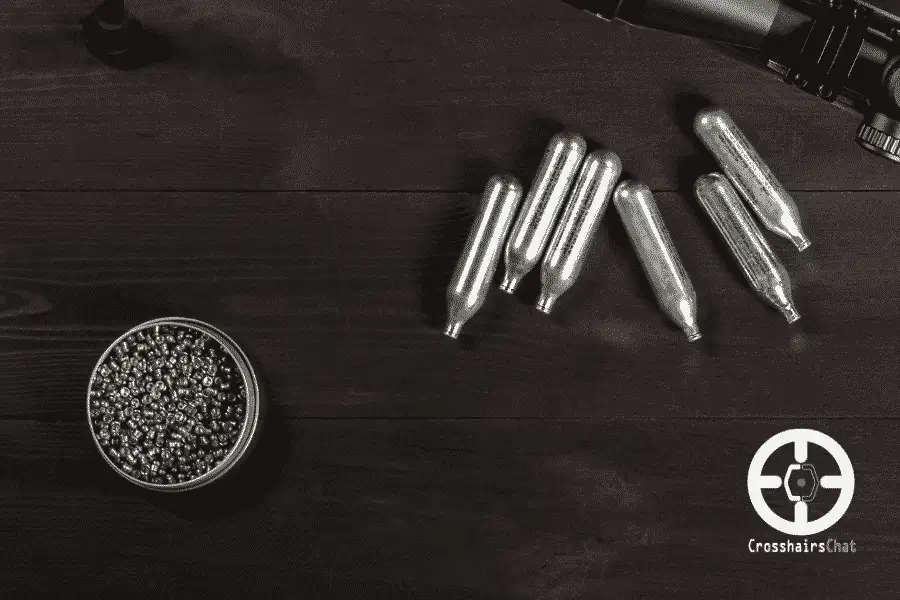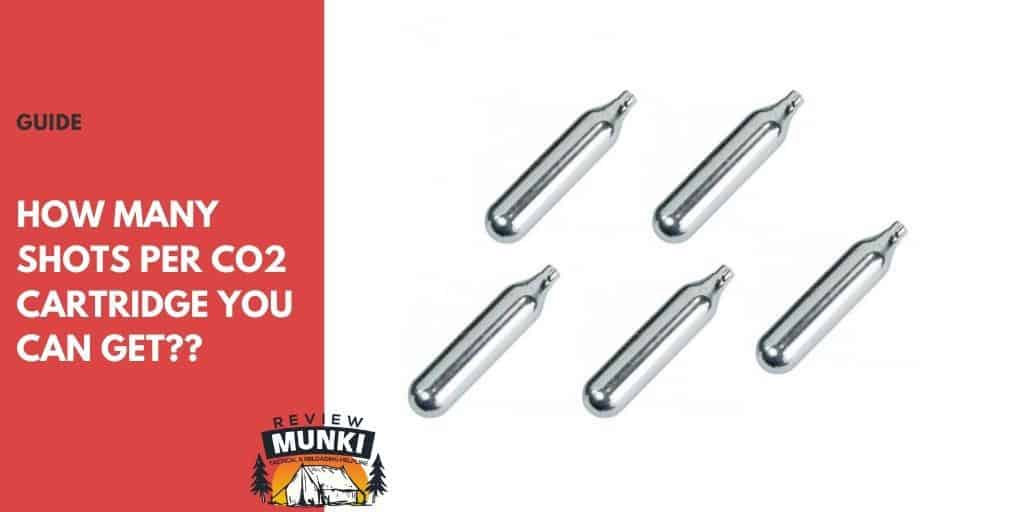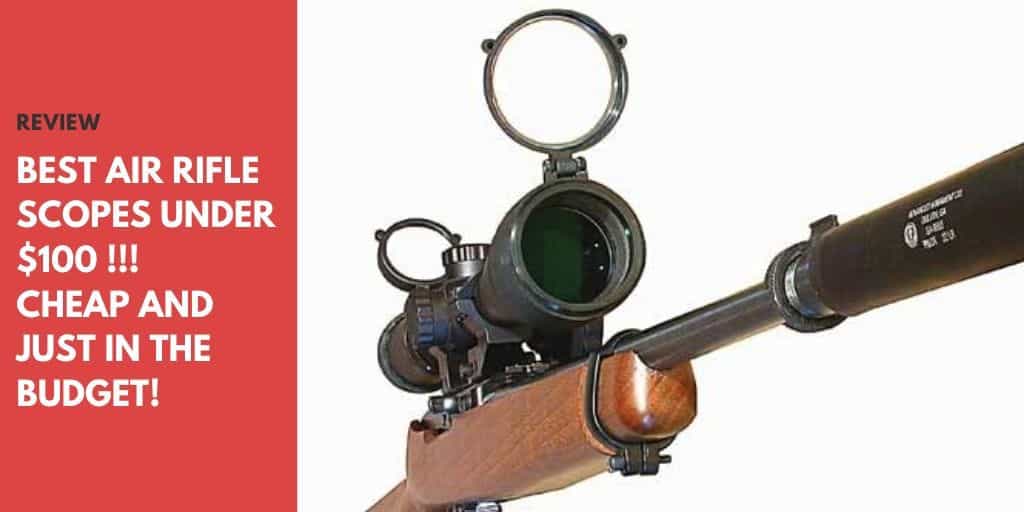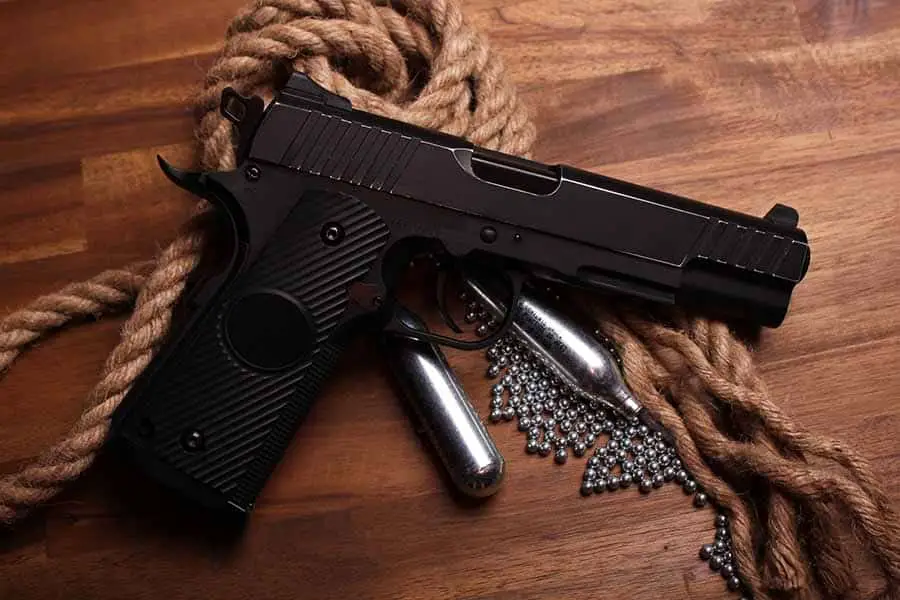The market for air guns is rising even faster than firearms sales in America as the sport gains popularity.
Olympic athletes use 4.5 mm airguns in shooting and biathlon events. Enthusiasts go target-shooting at the local range or maybe just ‘plinking” in the backyard at bottles and cans. Some hunters use air gun rifles to chase small-game such as birds, rabbits, and squirrels.
Whatever you’re looking to do with an air gun, learning the basics ain’t much different than using a firearm — the projectile’s simply fired pneumatically rather than by chemical reaction. Typically, air guns use cartridges filled with CO2, or carbon dioxide.
But what is the pressure of CO2 cartridges and air canisters? Read on to learn all you need to know.

CO2 Cartridges & Air Canisters and Paintball Tank Pressures
It’s important to understand the basic physical principles of any weapon or sporting equipment you use.
The unique properties of CO2 allow the molecule to evaporate into gaseous form under mechanical compression. That makes CO2 the most popular choice for air gun cartridges and air canisters.
At room temperature, CO2 cylinder pressure is approximately 860 psi.
The typical CO2 cylinder stores 100 lbs. or so of liquid CO2. Just two pounds of liquid CO2 expands to some 20 cubic feet of pure CO2 at normal atmospheric pressure. So if you can understand how a firearm works, this won’t be any more complicated.
A brief history
The modern air gun dates back to 1580, with the first historically recognized bellows air gun. For more than two centuries afterward, the air gun provided power and utility superior to any firearms. Hunters used .30 and .51 caliber air gun rifles to hunt large game and the invasive wild boar.
By 1803, explorers Lewis and Clark were “wowing” Native Americans they met with demonstrations of the 4 ft. Italian-designed Girardoni air rifle. The long gun fired .46 or .51 caliber balls from a spring-fed magazine of 20 balls — one of the first semi-automatic rifles also used in warfare.
Throughout those early days, manufacturers built air rifles that used a pump to fill an air reservoir. The compressed air provided a velocity of 650 to 1,000 ft/s.
By the 1870’s, American Paul Giffard first used and sold air guns firing CO2 cartridges. Yet manufacturers didn’t popularize that technology until the 1950’s. Since then, CO2 has been the favored way to fire a pneumatic air gun.
CO2 Cartridge, Air Canister & Paintball Tank Pressure
Now that we’ve covered the basics, let’s see how CO2 pressure in cartridges and canisters affects the velocity of the projectile.
The pressure of CO2 depends upon temperature rather than mechanical compression. Rather, CO2 converts from a gaseous state to liquid when mechanically compressed, reaching an ideal pressure.
So generally, CO2 acquires a pressure of approximately 852.8 psi within a cartridge or canister when reaching room temperature, or approximately 70 degrees Fahrenheit.
What Is the Pressure of BB Gun/Airgun CO2 Cartridges?
There’s a general standard that applies to a CO2 tank. When its temperature reaches 70 degrees Fahrenheit, the gas acquires a pressure of about 852.8 psi, if within a vessel or cylinder. If there’s more CO2 gas in the cylinder, it changes to liquid form.
Therefore, that cartridge you use for your bb or airgun is a pressurized gas above a liquid at room temperature.
Once you fire your favorite airgun, the cartridge releases some gas. At the same time, it converts a portion of the remaining liquid to gas to occupy the vacant space the released gas left behind. This way, the psi equalizes for the temperature.
Thus, the internal pressure of bb and air gun CO2 cartridges depends on temperature. Cold weather, warm weather and humidity will all affect the ultimate pressure of your canisters (due to changes in barometric pressure caused by these weather states).
However, to achieve enough power behind the pellet for the gun to reach the FPS or specified velocity, this pressure should be a minimum of between 852 and 900 psi.
Why Is Rapid Firing Not Advisable?
You should note that CO2 is a refrigerant gas. That means it cools upon expanding. Therefore, firing your CO2-powered airgun in quick succession means the cartridge or cylinder will cool, resulting in gas pressure loss. Subsequently, the psi goes declines along with the velocity.
For improved accuracy, avoid firing in rapid succession to increase your chances of hitting the target.
But fortunately, CO2 takes only a short time to get back to the right temperature. A 12 to 15-second pause between shots is best. Of course, this may vary depending upon the ambient temperature.
What Is the Best Pressure for Airsoft Canisters?
Quick public service announcement: Do yourself a huge favor and never try to use other gas cartridges in an air gun designed for CO2. Any mixing and matching of gas cartridges with CO2 air guns is dangerous.
Another thing for hunters to remember is that air guns with CO2 cartridges are of little use in colder weather situations. Since CO2 is sensitive to temperature, your pellet gun may not fire well when the temperature dips below 60 degrees Fahrenheit. The air gun might jam and the projectile might become lodged in the barrel.
That’s why you won’t see any deer hunters in northern latitudes from Vermont to Washington using anything but firearms in the woods.
Though pressure helps to achieve velocity, external factors influence the performance of the air gun system.
At higher elevations, for example, the pressure of the CO2 in the cartridge or canister increases, which may triple the power of the rifle.
What Pressure Is Best for Paintball Guns?
For most paintball guns, the air cylinder is not terribly big. So you need a high pressure of approximately 1,200 psi to avoid literally running out of gas. That requires that you refill the air cylinder every five minutes or so.
The system works by regulating the high pressure in the storage cylinder to 250 to 850 psi. As you fire the air gun, the psi in the storage cylinder drops while the regulated output stays constant.
Paintball guns also allow you to adjust velocity and regulate the CO2 flow. That means you can make adjustments considering ambient temperature,
To determine the best pressure for paintball guns, it’s best to check the manufacturer’s specifications, however, as they will vary.






